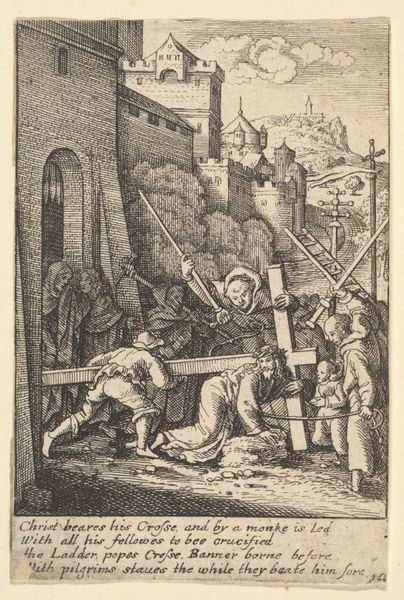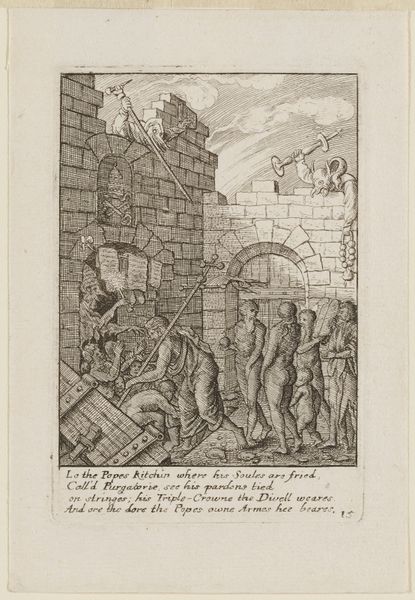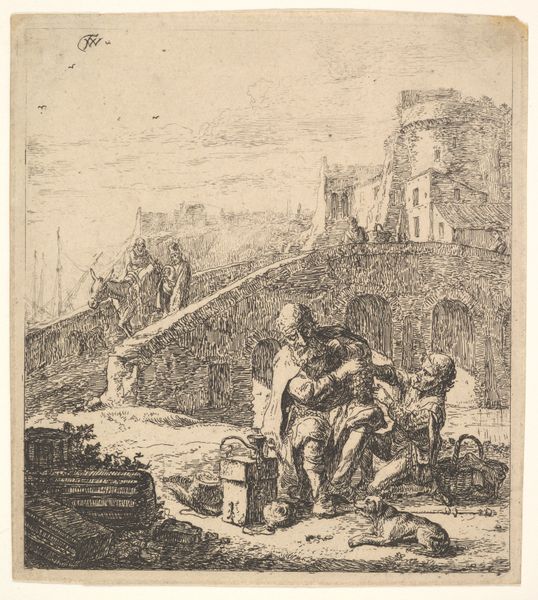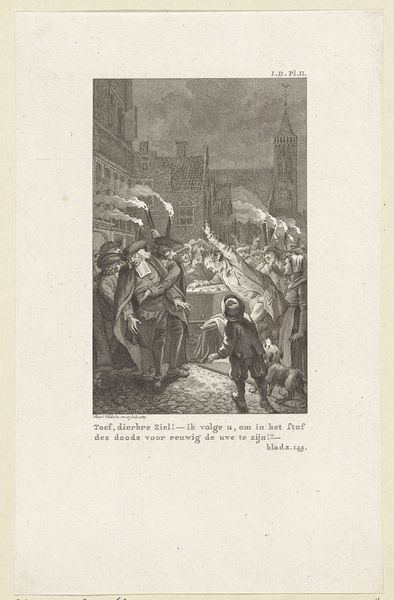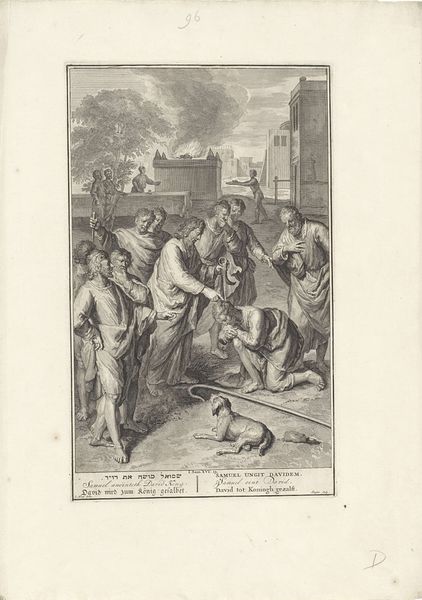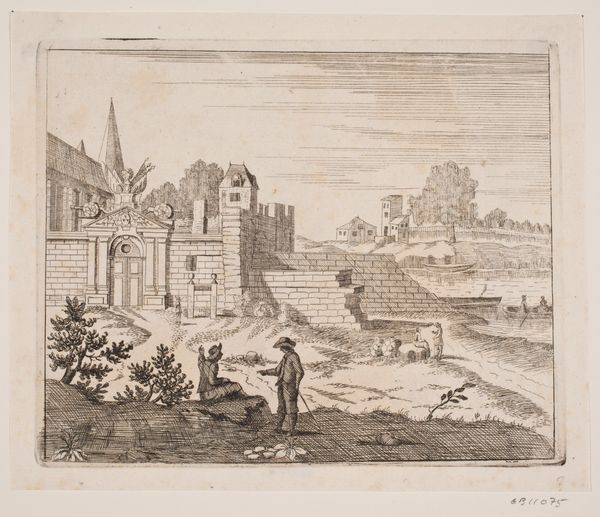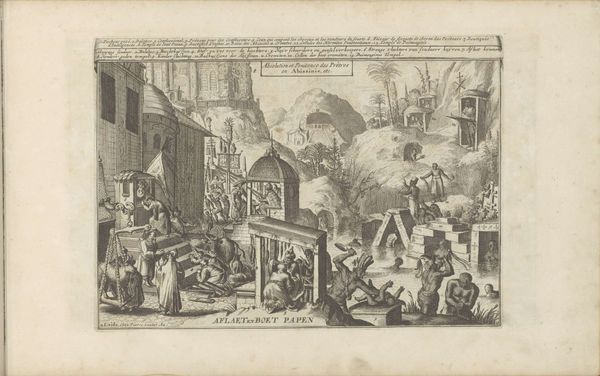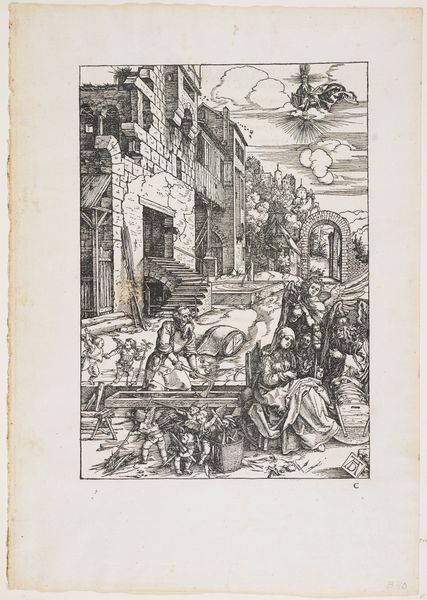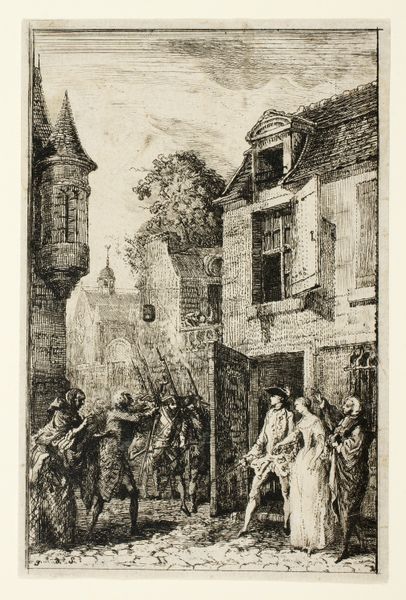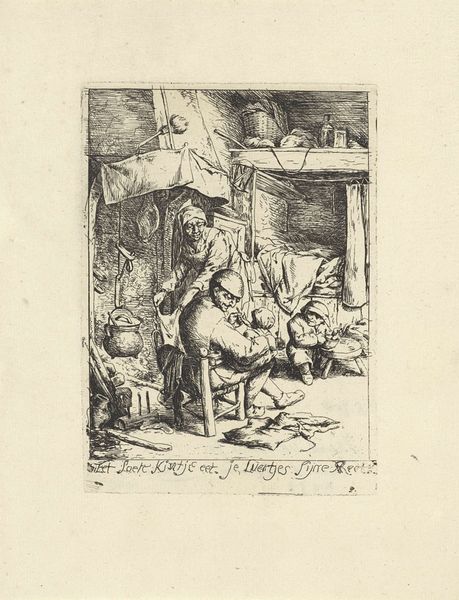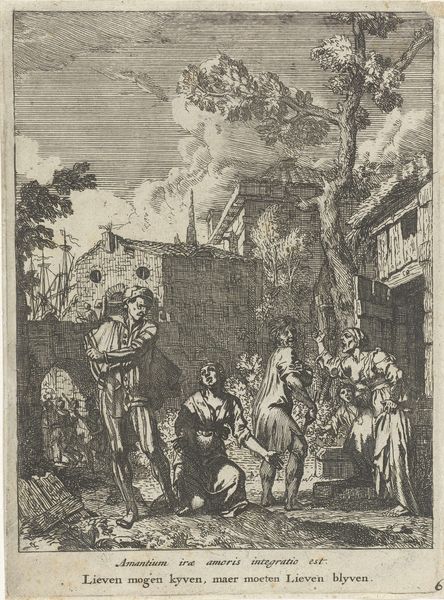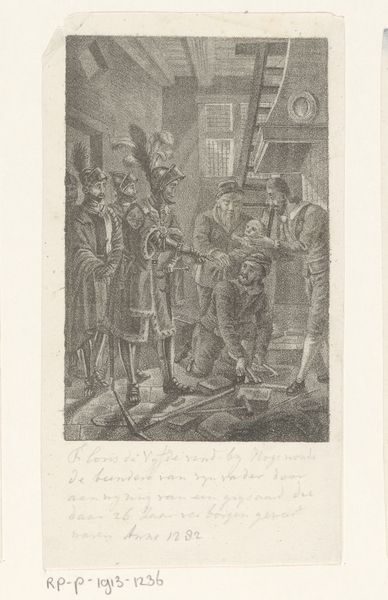
print, etching
#
narrative-art
#
baroque
# print
#
etching
#
figuration
#
history-painting
Dimensions: 3 9/16 × 2 1/2 in. (9.05 × 6.35 cm) (image)4 1/2 × 3 1/8 in. (11.43 × 7.94 cm) (sheet)
Copyright: Public Domain
Wenceslaus Hollar made this print, Christ Carrying the Cross, using etching, a printmaking technique, sometime in the 17th century. The image is rendered through a dense accumulation of finely incised lines into a metal plate, which would have been a labor-intensive process. You can see the rich tonal range and intricate detailing achieved through this traditional craft. The etching process required Hollar to have a mastery of both technical skill and artistic vision. The precise control needed to create the fine lines that describe the dramatic scene speaks to the rich traditions of printmaking. By employing etching, a technique that allows for detailed and reproducible imagery, Hollar disseminated this religious scene to a wider audience. The print's small size also speaks to its function as a portable object, easily shared and contemplated. Consider how the materiality of the print, a multiple produced through skilled labor, intersects with the social and cultural context of religious dissemination in the 17th century. It reminds us to value the labor, skill, and cultural context embedded in the work.
Comments
No comments
Be the first to comment and join the conversation on the ultimate creative platform.
